Municipality of Thermaikos
The choice of our home is one of the most important decisions of our lives. In todays fast pace we live in our house is the place of rest and contact with our family and our friends. We ask for peace and tranquility of the countryside with the conveniences and amenities of the city. We want our children to have space to play and easy access to their school.
Irritated when looking to park our car and we have our own parking. We like to sit in a wide balcony , enjoy the fresh air while avoiding the noise of the city. Dreaming of winter evenings to sit by the fireplace with our family. We d be close to cinemas, shopping centers and we can enjoy food and drink in our near sea. The completion of these desires are achieved in the area of the Municipality of Thermaikos without the other having to pay a fortune.
Welcome to the municipality of Thermaikos
The Thermaikos Municipality stretches over 50 km of coastline to the east of the city of Thessaloniki. It has over 10 regulated crystal clear beaches, 2 Natura regions (Epanomi and Angelochori lagoons) with 178 rare and protected bird species and in excess of 2500 plant species, archaeological discoveries, which date to the 4th - 5thcenturies BC and churches dating from 1110 - 1865 AD. It is a stone’s throw from the MAKEDONIA airport (just 15 km) and is an ideal tourist destination for visitors all year round.
At the dozens of small taverns that are literally strewn along the beach, one can enjoy fresh seafood and traditional appetizers accompanied by excellent local wine and the well known tsipouro. It is made by local producers in the traditional manner and its recipe has been created and handed down from generation to generation.
The best known beaches are Potamos, Fanari, Ageladariko, Angelochori Beach, Agia Triada Beach, Baxe Beach, Perea Beach, which are bustling with beachgoers in the summer months enjoying a swim with a view of Mt Olympos and the Thermaikos Maiden.
A brief history...
The region has been inhabited from the Early Iron Age down to the Hellenistic Period. The bulk of the population subsequently moved to the newly constructed city of Thessaloniki without however abandoning the region. The oldest discoveries in the region are theAncient Aenea tomb mounds, a city that is mentioned by Straboand which is currently identified in the Ν. Michaniona geographical area to the northwest of toumba - tambia Beach. Aenea was probably a Corinthian colony that was founded in the late 8thcentury BC and was minting its own coins with the head of Aeneas as the symbol by the late 6th century BC. It was allied with the Athenians in the Delian League in the 5th century. In the 4th century BC it escaped from the Athenian sphere of influence and joined the Chalkidean Commune until 348 BC when it was occupied by Phillip II, the king of Macedonia. The sources mention Aenea as one of the settlements that merged in 315 BC to form Thessaloniki, but it was not completely abandoned, since activities are apparent even in the 3rd and 2nd centuries BC.
During the Byzantine period the region belonged to the Kalamaria Kapetanikon (fiefdom) and during the Ottoman period of occupation it succeeded in acquiring privileges that ensured the integrity of the settlements. The region’s fortification began to develop in the 19th century since it was of strategic importance to the defence of Thessaloniki. The Angelochori Lighthouse is one of the fortifications in the region that has survived. It is located on the edge of Cape Megalo Emvolo and has been classified as a Protected Recent Monument of Industrial Heritage and is included amongst the 25 heritage lighthouses of Greece. The Naval Fortifications have also survived. They are situated along the northern edge of the Megalo Emvolo rocky coast (kara-bournou) at a position of strategic significance since ancient times. These fortifications were constructed by German engineers in the late 19thcentury.
The exchange of populations after the Asia Minor catastrophe resulted in the establishment of settlements by refugees from Asia Minor. These settlements were established along the eastern coast in the wider Municipality region at Perea, N. Epivates (formerly Baxe), Agia Triada in the former Thermaikon Municipality, Angelochori, N. Kerasia in the former Michaniona Municipality and Mesimeri in the Epanomi Municipality, which now constitute the new Thermaikon Municipality under the Kallikratis Law.
There was intense residential development in the region due to population re - settlement in the 1990s by predominantly young families who settled permanently in the region in search of a better quality of life near the sea and nature.
Regions of the Municipality of Thermaikos
Peraia
Perea has changed a lot since 1923 when the first residents (refugees from Asia Minor and Thrace) settled. It has changed from a small refugee town into a beautiful city with the features of a tourist destination that does not need to envy the other more promoted regions in Greece.

At a distance of just 15 km from the MAKEDONIA International Airport and 20 km from the centre of the city of Thessaloniki, it is an easily accessible destination for visitors who want to enjoy beaches with crystal clear blue waters, fresh fish, seafood and traditional dishes, and ouzo appetizers with the local tsipouro drink and wine or their coffee, literally on the beach with a view of the Thermaikos Gulf and the city of Thessaloniki.
The traditional stroll along the beach is a unique experience. Abundant cultural and sporting events are an attraction, especially during the summer months with the characteristic bicycle ride that is organised every summer by the Municipal sports centre, with visitors of all ages participating daily.
With a rich tradition in terms of the sea, the residents in the region have established two sailing clubs, NOPTH and TORONEO, whose members have participated in both Greek and International regattas.The School of Macedonian Tourism Professions has been based in Perea since 1974 and has a significant impact on the development of tourism in the region.
 This 7.5 km long sandy beach is a point of attraction for more and more visitors all the time. It is crystal clear, has been awarded with blue flags and has lifeguard cover at 2 popular spots (Theros and Kochyli area). It is completely regulated with deck chairs and umbrellas, while dozens of beach bars operate along the entire beach from morning till late at night, which converts the beach into a separate entertainment venue for young and old alike.
This 7.5 km long sandy beach is a point of attraction for more and more visitors all the time. It is crystal clear, has been awarded with blue flags and has lifeguard cover at 2 popular spots (Theros and Kochyli area). It is completely regulated with deck chairs and umbrellas, while dozens of beach bars operate along the entire beach from morning till late at night, which converts the beach into a separate entertainment venue for young and old alike.

Perea Beach is renowned for its many fish taverns that serve a meal with fresh fish literally on the beach, with a view of Thessaloniki across the waters. All categories of hotels and rooms for rental are strewn along the entire length of the Beach with affordable prices that have been amicably adapted to the needs of the visitor.

It is accessible by car and public transport.
Neoi Epivates
N. Epivates is situated to the west of Perea and along the beach. During the Ottoman occupation it was a Turkish estate that was known as Baxe Tsifliki, which is the name the town is still known by (The late singer - songwriter Tsitsanis who lived in the region composed a song about it).
It is a village with lush and incredible natural beauty that has been constructed in an amphitheatre style from the hills down to the beach.
A characteristic feature is the beach (Blue flag and lifeguard cover) with its crystal clear waters. It is shaded by plane trees along almost its entire length with taverns, beach bars and coffee lounges dispersed along the beach.
The 900 metres long sandy Baxe Beach (as it was formerly known) is the number one choice with young people. Huge trees cast their shade and coolness on the sands along the entire beach. It has been awarded with a blue flag and provides lifeguard coverage throughout the summer. This Beach combines the picture of a fishing village with intense and modern summer entertainment that starts in the morning at the dozens of beach bars that line the entire beach until late at night. A visitor can enjoy fresh fish (from local fishermen), local delicacies and select tsipouro and locally produced wine at the small taverns that are strewn along the beach.

Hotels of all categories as well as dozens of rental rooms with all the comforts cover tourist accommodation.
It is accessible by car and public transport.
Agia Triada
One of the most famous villages of the Municipality, AgiaTriada, extends to the west of N. Epivates and along the beach. The first settlement was established by 85 refugee families who quickly organised themselves and built a beautiful village with traditional character.

It is the strongest centre of attraction for tourists to the wider region because of the two beaches that are distinguished by their golden sands and crystal clear waters and which are awarded with blue flags every year. The small taverns that are strewn along the beach stand out because of their uniquely flavoured seafood, ouzo appetizers and local regional specialties.
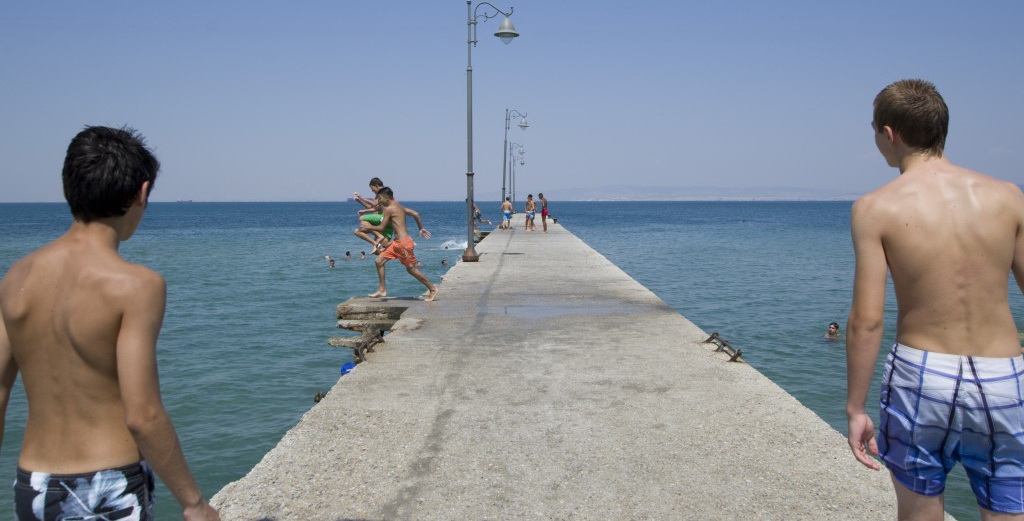
This is one the best known beaches in the region. Golden sands, pristine, always calm and shallow at the beginning, it is an excellent choice for families with young children. It has been certified with a blue flag and provides lifeguard cover. It is a well known spot in the municipal plaza and a point of attraction for hundreds of tourists during the summer season. It is a refreshing oasis of respite just a few kilometres from the centre of the city.

Fish taverns and ouzo bars on the beach with an exceptional view of the bay serve sumptuous delicacies throughout the day until late at night.

High standard hotels, as well as rental rooms, contribute to a relaxing stay at this exquisite Beach.

It is accessible by car and public transport and has more frequent routes during the summer period.
Aggelochori
It is built on Cape Megalo Emvolo, which is also known as Kara - Bournou. It is an ideal destination for nature lovers both for its natural beauty as well as in excess of 178 species of rare birds and even Flamingos that find refuge at Angelochori Lagoon, while the imposing white salt hills (Salt marshes) dominate a few metres away from the wetlands.
Fortifications dating to the last period of Ottoman rule (1883 - 1885) have survived (barracks) in a very good condition on the north side of Megalo Emvolo. Aggelochori Lighthouse has stood impressively as a symbol of hope and light for seafarers since 1864, at the tip of the cape and 33 metres above sea level.
Natural resources of incomparable beauty, picturesque small taverns, crystal clear waters, dreamy sunsets and the warm hospitality of the people turn guests into fanatic fans of the region.

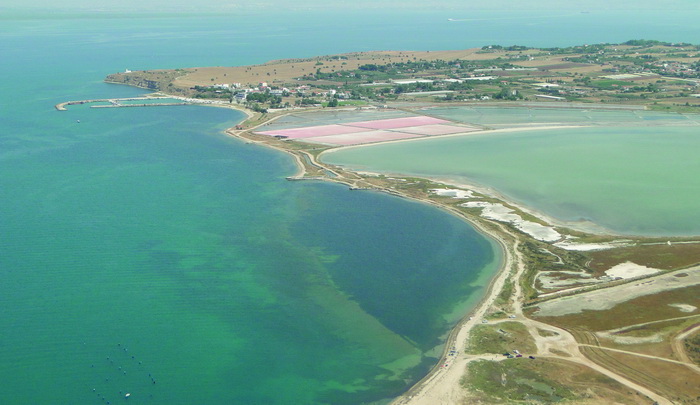
Aggelochori Beach is only 30 km from the centre of the city of Thessaloniki and is an oasis for relaxing in crystal clear and refreshing waters with an exquisite view of the city of Thessaloniki and the imposing Mt Olympos massif. After going in for a swim, a visit to the Lighthouse with the spectacular sunset and the Fortifications is an unforgettable experience. You must also not omit to visit the lagoon with the rare birds and the salt marshes.

There are hotels at a close distance in the surrounding region for accommodation.

It is accessible by car and public transport.
Kerasia
The large burial mound and two tombs dating to the Roman period are finds that have been unearthed archaeological excavations proving that the region flourished in classical times.
Today it is a small refugee village dating to 1922 when refugees from the south coast of Eastern Thrace along with 13 local families settled here. Despite the difficulty in the early years, residents were able to not only survive but to economically and culturally develop the community. A reference point for the village is the church dedicated to the Archangels that was consecrated in 1818. According to tradition, the church was built on the site where the miraculous icon of the Archangel Michael was found buried. The church is visited by crowds of pilgrims on November 8th, its festival day.
The small picturesque village taverns are an ideal culinary destination, where guests can enjoy traditional food with tsipouro and wine that is locally produced.
Michaniona
Constructed on one of the most panoramic locations in the Thermaikos Gulf, in the ancient Aenea region, it boasts natural resources of particular environmental value, in addition to the multitude of archaeological discoveries.
It is renowned for the largest medium sized fishing fleet in Greece (the establishment of the fish market in 1998 made it the administration and marketing centre for fish and shellfish throughout Northern Greece) together with the Merchant Marine Academy (since 1968) that produces highly trained officers for Greek and foreign Shipping.
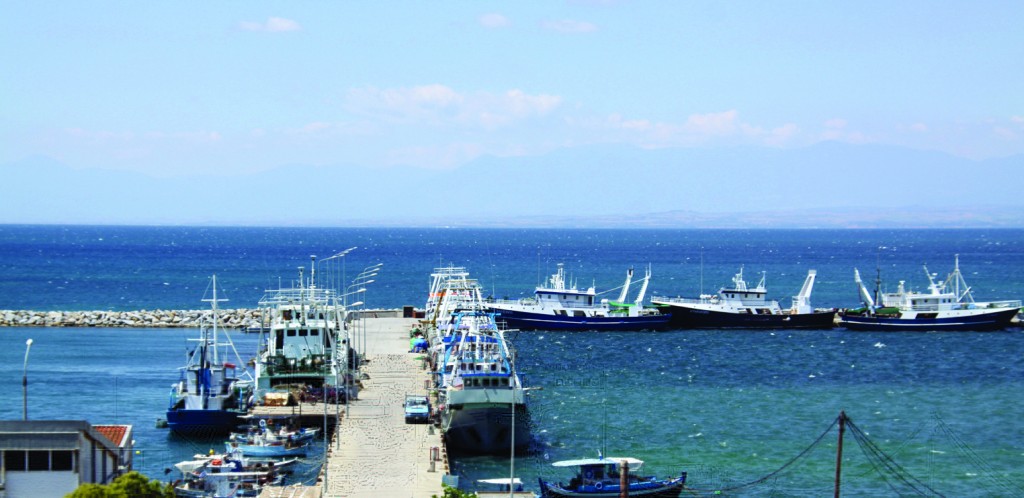
It is a multifaceted city waiting to reveal its different aspects to every type of visitor. It reveals a veritable paradise to the nature lover (Natura region) with rare flora and fauna. For the lovers of antiquities there are discoveries dating to the Roman and early Christian times (a trapezoid shaped mound known as Toumba Tambia or Koum Kale, Roman and early Christian period cemeteries and naval fortifications). For pilgrims there is one of the most imposing churches, the Church of Panagia Faneromeni, where the icon of the same name has survived from the Iconoclast Period, as well as the picturesque chapel dedicated to Agios Nikolaos, the patron saint of sailors, at the small port at Michaniona.
For beach lovers there are moments for relaxing carefree in an environment of exquisite beauty in the crystal clear waters of Toumparli beach at Cape Touzla.
It has retained many characteristics of a traditional village, despite the tourist development. So when the sun sets, the central square fills with people strolling and enjoying the famous traditional Michaniona loukouma (donut) at one of the coffee houses located above the fish market and the small picturesque port, or savouring fresh fish while overlooking the deep blue yonder.
Between Michaniona and Aggelochori, just 30 km from the centre of Thessaloniki is Touzla Beach, which literally possesses the beauty of an island in the Aegean Sea. It has a fine golden sandy beach, cooling waters and a view of the ships sailing in and out of the Thermaikos Gulf. It is a full regulated Beach with deck chairs, straw umbrellas, beach volley ball courts and beach bars and operates during the day and is a point of attraction for mainly younger people.


It is accessible by car and public transport.
Mesimeri
This small refugee town was established by refugees that had been uprooted in 1922. It has retained all the features of a traditional village. The old church of the village patron saints, Agioi Konstantinos and Eleni is of exceptional interest in Mesimeri. Its construction dates to the Ottoman occupation. Taverns with local delicacies, treats and good local wine attract not only the locals, but also visitors from other regions who appreciate good traditional food.
Epanomi
In Homer it is mentioned as Gigonis Akra and has been continuously inhabited since the Neolithic Period. It was one of the major towns during Byzantine times as well as the Ottoman period of occupation with an Administrative Organization and a thriving economy. The vast majority of its residents are indigenous. Excavations have revealed important archaeological discoveries from all historical periods (Organized Early Christian Era burial ground at Limari - 4th - 5th centuries AD, forty two graves dating to the 2nd to 5th centuries AD, an Early Christian Church at Migiadoudi, Dependency of the Monastery of Agia Anastasia at Kritziana).
At Tsairi, 4 km to the south of Epanomi, is an oasis of natural beauty, the Epanomi wetlands habitat, which has been included in the Network of protected Natura regions. Thousands of nature lovers flock here every weekend to see the flora and fauna up close and to also enjoy a natural environment of rare beauty.
The natural beauty of Epanomi has surprises for every type of visitor. There are the archaeological discoveries and the Natura region, and of course the blue waters along kilometres of beaches of incomparable beauty that are literally flooded by visitors on summer weekends. Potamos with the well known shipwreck, Fanari, Ageladariko beach, Karagioz estate, Epanomi Beach and Mesimeri Beach are amongst the most popular beaches.
Without exaggeration, the Epanomi taverns on the beach and in town serve the freshest fish in Greece, due to the unique angling method used by fishermen in the region, which has been handed down since antiquity. Together with the fish and select savouries, the visitor deserves a taste of the renowned Gerovasileiou wine that is made in region or the well known Epanomi tsipouro.
The beaches at Epanomi can justly be considered to be the most beautiful in the Municipality. They boast crystal clear waters, golden sands, lush green surroundings and magnificent view of the endless blue yonder set against the snowy peaks of Mount Olympos, the mountain of the Gods.
Potamos Beach is amongst the most well known beaches to the southwest of Epanomi. It is regulated with life guard cover and has been awarded with a blue flag.

It boasts crystal clear waters, a fine grain sandy beach, beach volley ball and tennis facilities and beach bars along its entire length. Its most impressive point is the wreckage from a ship that sunk forty (40) years ago, whose smoke stacks are still visible and it is known as the shipwreck.

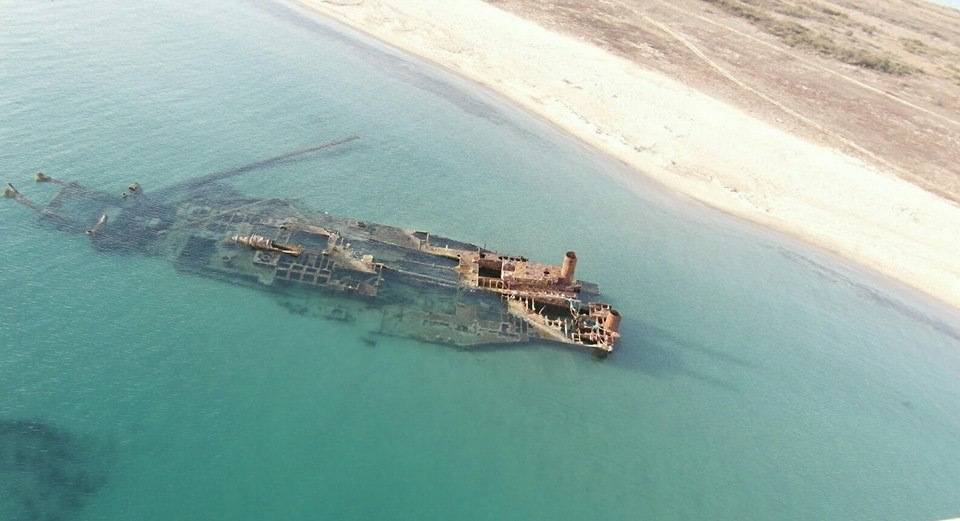
Palioura Beach is also another excellent choice. This sandy beach with crystal clear waters is planted with pine trees and organized with beach bars that open from morning until late at night and provide entertainment to the young people who flock daily.

Myti at Epanomi or Fanari Beach is a unique location and amongst the most beautiful beaches in Greece. It flirts with both sides of the bay; one towards Thessaloniki and the other towards Chalkidiki, the tip magically disappears into the sea. It boasts bright blue waters, an endless golden sandy beach and a deep blue sea that stretches into the distant horizon. This Beach is only accessible by a 4x4 vehicle or on foot (about a half kilometre walk).
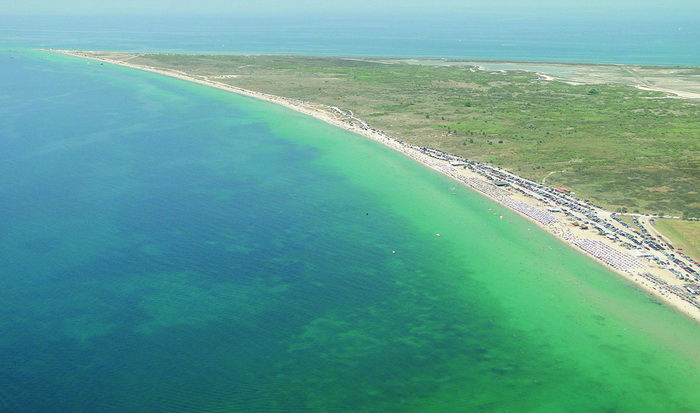

It doesn’t matter which beach you choose at Epanomi, you will certainly be impressed with its beauty.
Additional photos